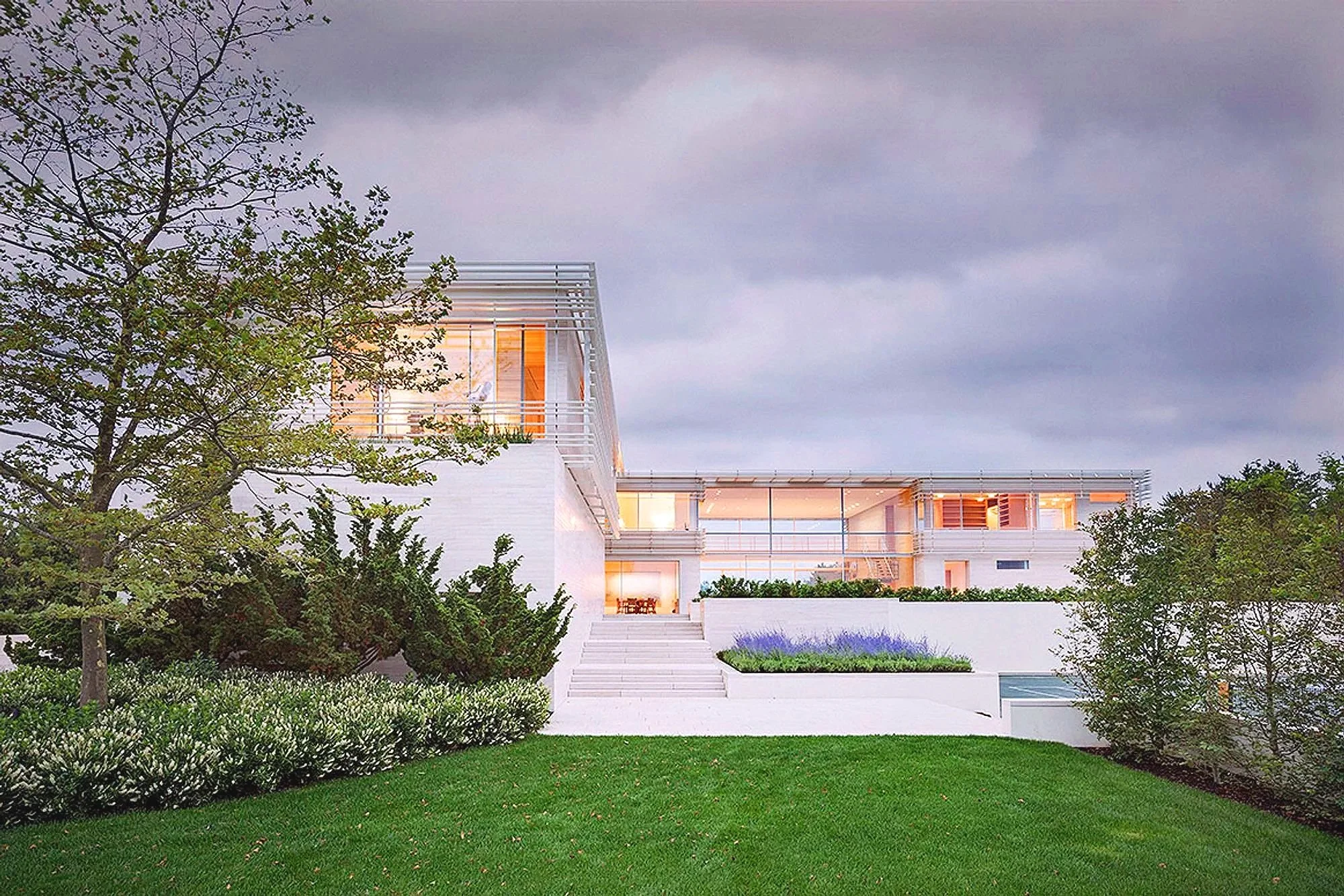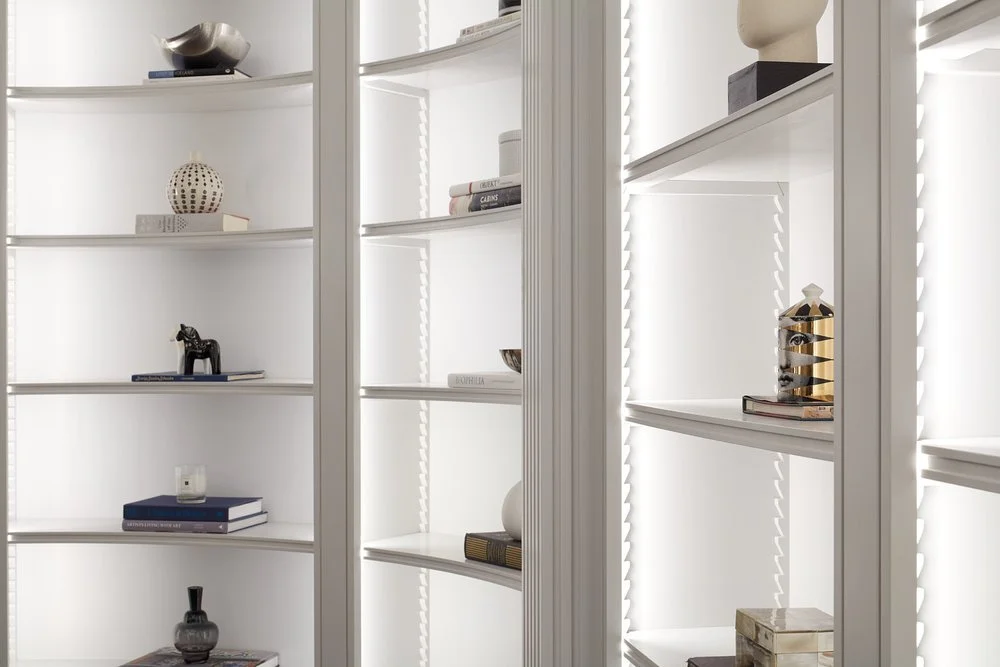
LUMINOUS POETRY FOR ARCHITECTURE AND INTERIORS
As a premier high-end residential and hospitality lighting design studio, Tirschwell Lighting Design transforms spaces into immersive experiences through the refined use of light. We believe lighting is not simply illumination—it is narrative, emotion, and artistry.
Ours is not a formulaic approach. Each design is entirely bespoke—shaped by the architecture, the client, and the unique rhythm of the space itself. The result is lighting that doesn’t just reveal beauty—it creates it.

“Lighting is about drawing out things that you may not have necessarily seen, or drawing your eye in a way that you might in the theater—through the use of color angle, distribution and intensity”
MATTHEW TIRSCHWELL in BUSINESS OF HOME
ARTISTIC LICENSE
There’s lighting art—and then there’s bringing art to life. We do the latter.
At Tirschwell Lighting Design, each artwork and commission is approached as a singular expression. translated through a meticulously tailored lighting program—one that reveals, enhances, and transforms.
In this respect, TLD stands alone. We quite literally shine a light on the work, while adding a layer of drama and depth that heightens the experience of it. From Degas to Sargent, from Calder to Koons to Kaws, it has been our privilege to illuminate masterpieces of every scale—and we never fail to leave a lasting impression.

“When it comes to lighting art, Tirschwell is the GOAT!”
NYC GALLERY OWNER
EVERY DESIGN COMMISSION IS TREATED AS A UNIQUE PROTOTYPE
We are a design firm that believes in discovery through physical models rather than digital renderings. By using full-scale prototypes in real-world conditions with actual lights and materials, we refine and perfect our designs based on tangible results rather than theoretical representations. This process ensures that every design decision is rooted in practical performance and aesthetic authenticity.

“Matthew’s work is extremely detailed and his firm possesses the ability to visualize design and implement lighting that fits the client’s wants and needs perfectly”
KEVIN OSTROFF, OWNER | OSTROFF ELECTRIC
OUR PROCESS
-
The heart of any remarkable lighting design lies in the process. At Tirschwell, with our residential projects, it begins with a deep understanding of the client’s needs and lifestyle.
Lighting specialists need a document that tells them how the action will unfold—a script to better understand how each space is used, and by whom. What we do very early on, just like the interior designer and the architect, is get into the client’s brain. We want to understand what their day-to-day routines are from morning until night.
We don’t just look at the fixtures; we aim to create experiences. To arrive at that, there are several key questions we ask our clients, such as:
How are spaces going to be used?
What are the types of places that resonate with materials, light, touch, smell, taste?
What does their environment look like when they wake up in the morning?
Do they wake up before dawn or at 11 o’clock?
Do they want to come in and turn on all the lights, or do they only want a whisper of light? Are there special considerations not easily identified?
How do other materials — paint and other finishes — complement the owner’s expectations?
Do they immediately head to the gym or ease into their day?
By understanding clients’ daily lifestyles and routines, a lighting designer can cater around it. Their answers form the foundation of the lighting design, from fixture to control.
We translate this information into hierarchies of light. We first establish what we want to see. How we achieve that comes later.
-
“Show them a lighting plan, and clients don’t know how to read it,” says Tirschwell. Renderings may convey a mood, but do not represent how the client feels in the space. “But by building mock-ups and crafting with materials [at] that intersection of light and structure: That’s the happy playground for us. Rather than looking at a plan on-screen, they can see the real light, the real intensity, the balance, the reflectivity, the color temperature—and they can co-design.”
Each lighting designer has their own unique approach to demonstrating their concept to clients before execution—and without letting anything get lost in translation.
At Tirschwell, we often lean on a range of presentation styles, from scale models to full scale installations, to communicate how a lighting scheme will manifest in a space.
In a recent example, Tirschwell built both a 3D printed model and a foam core model, scaled about one inch to the foot, for the lighting plan on a client’s pool house. We brought it to the site, mounted it in the basement, blacked out the surrounding windows, turned out the lights, and brought our micro lighting scheme to life. The best thing about the process? It opens up a dialogue between designer and client, to transform light from an abstract entity into something real and experiential. After this initial demonstration, the design team was able to come up with a revised iteration per the client’s input before applying the lighting scheme to the actual project.
-
After we establish and craft the visual experience, we begin to work back into selecting the actual fixtures, but the next step isn’t only fixture selection; it’s identifying the control system and protocols. We start thinking about controls very early on. That’s because lighting control — the user interface — makes the experience tangible for clients.
A carefully planned keypad also helps to smooth out any issues in the commissioning stage. We develop protocols, systems, and procedures to provide a holistic approach to the entire project. By identifying the type of user interface, the client’s expectations, and the capabilities available, we communicate salient information to other designers, the electrical contractor, and the technology integrator.
Down the line this identifies how much wall space is needed — and where — for lighting control panels, remote drivers, etc. Designing the keypads and other control components early in the design process ensures better coordination with the interior design and helps avoid costly change-orders.
-
The final touch of the lighting design process is commissioning. This is where we finetune and ensure that every element of the system is operating at its peak.
A lighting designer’s keen eye can pick up discrepancies, such as uneven dimming or inconsistency in the lighting system. For example, if a fixture isn’t dimming the same way as the others the problem could be the gauge of the wire, the reversing of polarity, or that lighting fixtures dim at different rates due to the dimming curve programmed into the driver.
This is where it’s valuable that the technology integrator and lighting designer have a relationship with the vendor partner to assist — not just when problems arise but at the front end by enabling the programming to be adjusted to achieve a more uniform light level.
This detailed approach ensures that the entire house operates seamlessly, regardless of the room or area. Plus, it has the benefit of saving the integrator numerous hours of labor. Once commissioning is complete, the lighting designer can aim accent and art lighting, and set final light levels.
